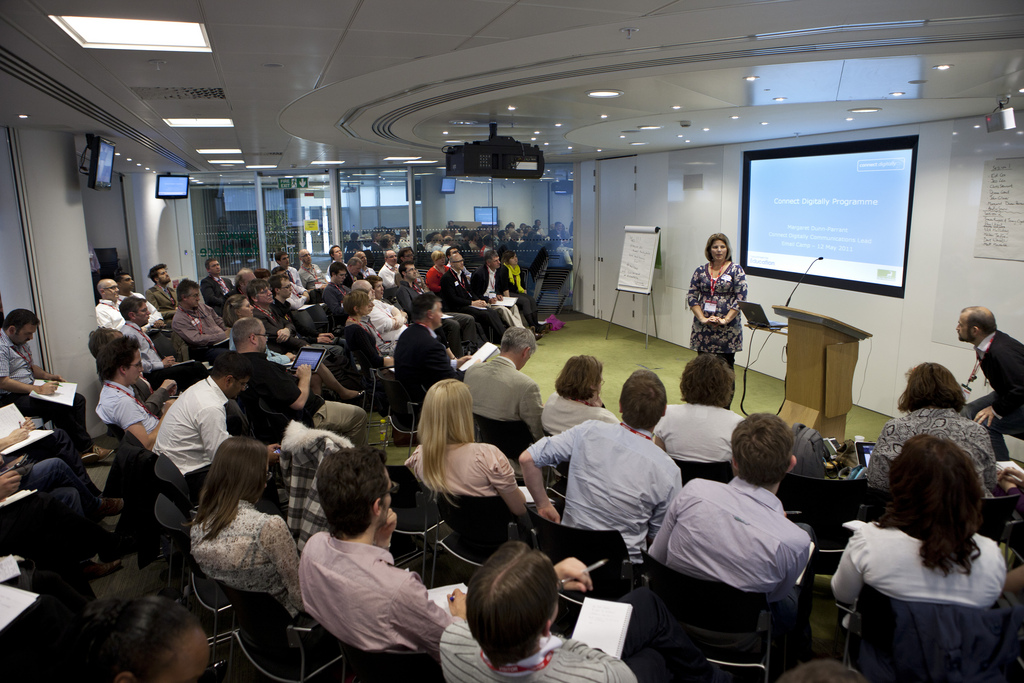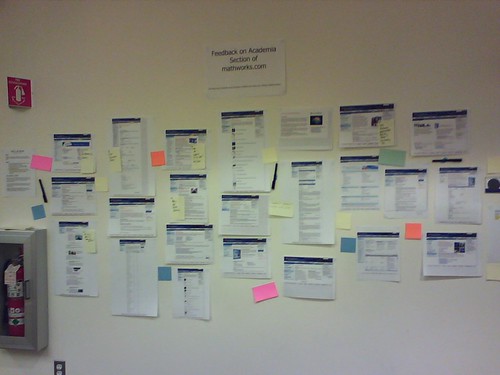Nick Halliday is asking another of his interesting questions:
Creating a public sector digital maturity model – what is missing? http://t.co/wtWuTGrNgh will share results
— Nick M Halliday (@nickmhalliday) June 13, 2013
And here’s his Google Doc so far as he starts to answer it. I think the concept of a flexible, down to earth maturity model could be a really useful method for assessing how well an organisation is using digital across the breadth of its work, extending some of the principles GDS has published as part of the Digital by Default Service Standard (which is a bit more focussed on a specific service).
Readers with good memories will remember this was something I wrote about here too, about 18 months ago:
One topic I’d like to think about at this week’s UKGovcamp on Saturday (the ‘doing’ day) is whether we can come up with a way of thinking about public sector digital activity in terms of a maturity or capability model, that could be applied to help teams and individuals set goals and maybe even benchmark their effectiveness. For instance, it might:
- Help teams to think about how sophisticated the organisation is at adopting and managing social media as part of official Communications and day to day communication
- Provide some material for people thinking about their CMS features and procurement, to factor in the kinds of activities and processes those tools should be supporting in 2012
- Offer insights into team size and structure, what the roles are in managing digital projects effectively (I’m deliberately not saying ‘digital communication’, for now)
- Give everyone some ready-made benchmarks to help evaluate impact, and if not hard numbers, then at least an open-source process for getting to an assessment of digital effectiveness
We had a useful session at UKGovcamp 2012 (see the notes here) and I did a bit of thinking afterwards to try and structure it into a model, but it’s taken Nick’s recent question to get me to actually write it up.
So here’s my contribution to Nick’s call for ideas – a structure for a maturity model based on four areas of digital:
- Digital service delivery
- Corporate & marketing communiciations
- Social media engagement
- Internal communications and collaboration
Within each, the assessment (maybe a 1-4 scale?) would look at:
- Vision
- Process
- Tools
- Skills
And use a number of criteria or question areas to establish maturity:
- Ownership & leadership
- Strategy & planning
- Technology
- User focus
- Embedded culture
- Risk management
- Community management
- Openness
If you’ve got any thoughts or queries, do let me (or better still, Nick) have them.


Comments
Hugely timely piece of work from both you and Nick – thanks. One practical question, how do you actually create those diagrams? I’d google it but am not even sure what they are called (and dont want lots of photos of spider webs……) I showed them to colleagues as an illustration and they instantly got it, so much clearer than words and lists – although I absolutely believe you need to do the thorough preparation work, to back up the final diagram.
Thanks Julia – yes, spider or ‘radar’ charts is how I’ve known that form of chart.
I’m fairly sure you could generate them from Excel/Powerpoint datasheets but if I’m honest I’ve never actually tried… here’s a tutorial though:
http://office.microsoft.com/en-gb/excel-help/present-your-data-in-a-radar-chart-HA010218672.aspx
Good luck!
perfect, thanks, will have a go!
[…] Since I have wanted to move things on a bit here I thought now is the time to revisit the maturity idea. At the same time Steph has also given an update on his thinking. […]
I’m part of a team @socitm working on an investigation of digital commitment by local authorities – essentially researching progress local authorities are making towards becoming ‘digital organisations’.
By ‘digital organisation’ we mean one that routinely in designs, develops and delivers services digitally; uses digital means of engagement with customers and stakeholders; and has embedded digital ways of working with staff and suppliers. The research will explore with local authorities:
• Progress on 15 digital principles set out in Socitm’s Digital Insights work
• Digital innovations in past two years
• funding and resources for digital developments
• governance and management of digital activity
We are inviting top performers in Better connected to participate in a survey to assess progress, on the basis that a high performing website is a likely indicator of above average digital development.
However, we are keen to include others who believe their experience is worth sharing – contact insight@socitm.net – and also to join up with wider public sector work like this.